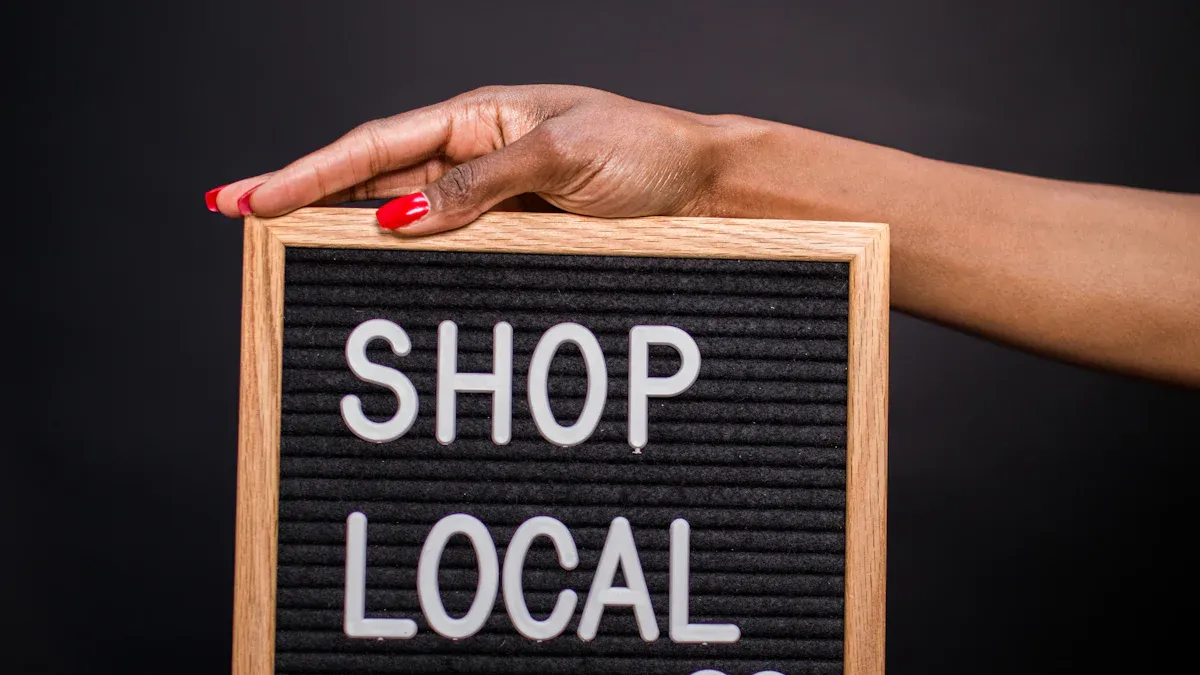The True Value of Buying Local: More Than Just Price
- Healthy Living
- Posted 7 months ago
When you think about the benefits of buying local food, do you only consider the price? It’s so much more than that. Choosing local means embracing the local economy, supporting your community, and fostering sustainability. Local independent businesses reinvest more in the community spirit. For example, independent retailers recirculate over three times as much revenue locally compared to chains. That’s real value.
Key Takeaways
Shopping locally helps your community. Each dollar spent at local stores creates jobs and boosts the local economy.
Local food is fresher and better for you. It keeps more nutrients and tastes great, making meals more enjoyable.
Picking local helps the environment. Shorter travel means less pollution and less trash.
The Real Value of Buying Local

Benefits of Buying Local Food: Freshness and Taste
When you choose local food products, you’re not just buying groceries—you’re investing in quality. Local food often travels shorter distances from farm to table, which means it’s fresher and packed with flavor. Imagine biting into a ripe, juicy peach that was picked just hours ago. That’s the kind of experience local produce offers.
Freshness isn’t just about taste; it’s also about nutrition. Local food products retain more nutrients because they’re harvested at peak ripeness. Seasonal local produce, in particular, provides a variety of nutrients that mass-produced alternatives often lack. Plus, buying local food gives you the chance to connect with farmers. You can ask about their growing practices and feel confident about what you’re feeding your family.
Did you know? Freshly picked local food has a more vibrant aroma, color, and texture compared to items that have been shipped across the country.
By shopping local, you’re not just filling your plate—you’re enriching your dining experience with superior taste and health benefits.
Supporting Your Community Through Local Spending
Every dollar you spend on local products strengthens your community. Local businesses reinvest a significant portion of their revenue back into the local economy. For example, independent retailers recirculate 48% of their revenue locally, compared to just 14% for chain stores. This creates a ripple effect, boosting local jobs, services, and infrastructure.
Here’s a closer look at how local spending makes a difference:
Metric | Local Businesses | Chain Stores |
|---|---|---|
Percentage of revenue recirculated locally | 48% | 14% |
Multiplier effect | 1.48 | 1.14 |
Local shopping also fosters community engagement. When you visit a farmers’ market or a neighborhood store, you’re not just buying goods—you’re building relationships. These interactions create a sense of belonging and strengthen the social fabric of your community.
Supporting local isn’t just about economics; it’s about culture. Local businesses reflect the unique character of your area, from the flavors of local food products to the craftsmanship of handmade goods.
By choosing local, you’re not just making a purchase—you’re making a statement about the kind of community you want to live in.
The Hidden Costs of Non-Local Alternatives
At first glance, non-local products might seem cheaper. But have you ever considered the hidden costs? Products shipped from far away often come with environmental and economic downsides. Long transportation routes increase carbon emissions, contributing to climate change. In contrast, local food has a smaller carbon footprint, making it a more sustainable choice.
Economically, spending on non-local alternatives drains money from your community. For instance, spending $100 at a local bookstore generates $193.75 in economic impact through multiple rounds of local spending. In comparison, the same amount spent online generates only $17.50.
Here’s how the multiplier effect works:
You spend $100 at a local business.
The business spends $50 locally on wages, rent, and supplies.
Recipients of that $50 spend $25 locally.
Recipients of that $25 spend $12.50 locally.
The cycle continues, amplifying the economic impact.
Non-local products also lack the personal touch and quality assurance that come with local shopping. When you buy local, you know where your products come from and who made them. This transparency builds trust and ensures you’re getting the best value for your money.
By choosing local products, you’re not just saving money—you’re investing in sustainability, community, and culture.
Economic and Environmental Benefits of Buying Local

How Buying Local Boosts the Economy
When you spend money at local businesses, you’re doing more than just shopping—you’re fueling the local economy. Local spending creates a ripple effect, where your dollar circulates within the community, benefiting more than just the business you purchased from. For example, when a local retailer buys supplies from nearby manufacturers, it boosts local employment and economic activity. This is known as the economic multiplier effect.
Here’s a quick look at how this works:
Example | Description |
|---|---|
Economic Multiplier Effect | Local spending circulates within the community, benefiting multiple layers. |
Local Supply Chain | Local retailers buying from nearby manufacturers boost jobs and activity. |
Greater University Circle Initiative | This initiative uses local purchasing power to revitalize economies. |
Farmers markets are a great example of this. When you buy fresh produce from a farmers market, you’re supporting local farmers and their families. This keeps money in your area and strengthens the local culture. Plus, the economic benefits extend to other businesses, like local cafes or artisans, who also thrive when the community supports them.
Environmental Benefits of Local Food
Buying local food isn’t just good for the economy—it’s great for the planet too. Local food travels shorter distances, which means fewer transportation emissions. On average, food travels about 2,000 miles from farm to table. By choosing local, you’re helping reduce this number and cutting down on greenhouse gas emissions.
Here’s some data to show the environmental impact:
Metric | Value |
|---|---|
Potential reduction in emissions | |
Reduction in carbon emissions | 10% |
Annual cost savings | $5 million |
Local food systems also use sustainable farming practices. Farmers who sell directly to consumers often rely on organic methods and reduce pesticide use. This improves soil health and protects water resources. Additionally, local food systems generate less waste. When food doesn’t travel far, there’s less spoilage, which means fewer items end up in landfills.
Farmers markets play a key role here too. They promote seasonal eating, which reduces the need for energy-intensive storage and refrigeration. By supporting these markets, you’re contributing to a healthier planet and a more sustainable future.
Job Creation and Community Development
Local spending doesn’t just create jobs—it builds communities. When you support local businesses, you’re helping create sustainable employment opportunities. For instance, investments in green infrastructure, like sustainable farming or eco-friendly construction, can generate millions of jobs. An investment of $188.4 billion in green infrastructure could create nearly 1.9 million jobs and generate $265.6 billion in economic activity.
Here’s how local purchasing impacts community development:
In Bernalillo County, New Mexico, local purchasing addressed behavioral health needs through targeted initiatives.
A $3 million investment tackled adverse childhood experiences, showing how local spending can improve public services.
Municipalities that focus on local economic development see stronger community engagement and reduced poverty.
Farmers markets also play a vital role in job creation. They provide a platform for small-scale farmers and artisans to grow their businesses. This not only preserves local culture but also strengthens the social fabric of your community. When you shop at these markets, you’re not just buying food—you’re investing in the people and stories behind it.
Supporting local businesses is about more than just economics. It’s about building a community where everyone thrives.
Buying local isn’t just about saving money—it’s about creating a thriving community. You support economic growth, protect the environment, and foster connections with every purchase. Studies show sustainability practices boost financial performance while improving local welfare. So, explore your local markets and businesses. Your choices shape a better future.
FAQ
What are the best ways to find local businesses near me?
Visit farmers’ markets or community events.
Use online directories like Yelp or Google Maps.
Ask friends or neighbors for recommendations.
🛒 Tip: Look for “locally owned” signs or labels when shopping!
What makes local food healthier than store-bought options?
Local food is fresher and retains more nutrients. It’s often grown with fewer chemicals, making it a healthier choice for you and your family.
What can I do to support local businesses besides shopping?
Share their social media posts.
Leave positive reviews online.
Recommend them to friends and family.
🌟 Note: Small actions like these can make a big difference for local businesses!
See Also
Exploring The True Cost Of Local Food In Chicago
Key Questions To Consider When Choosing Local Produce

